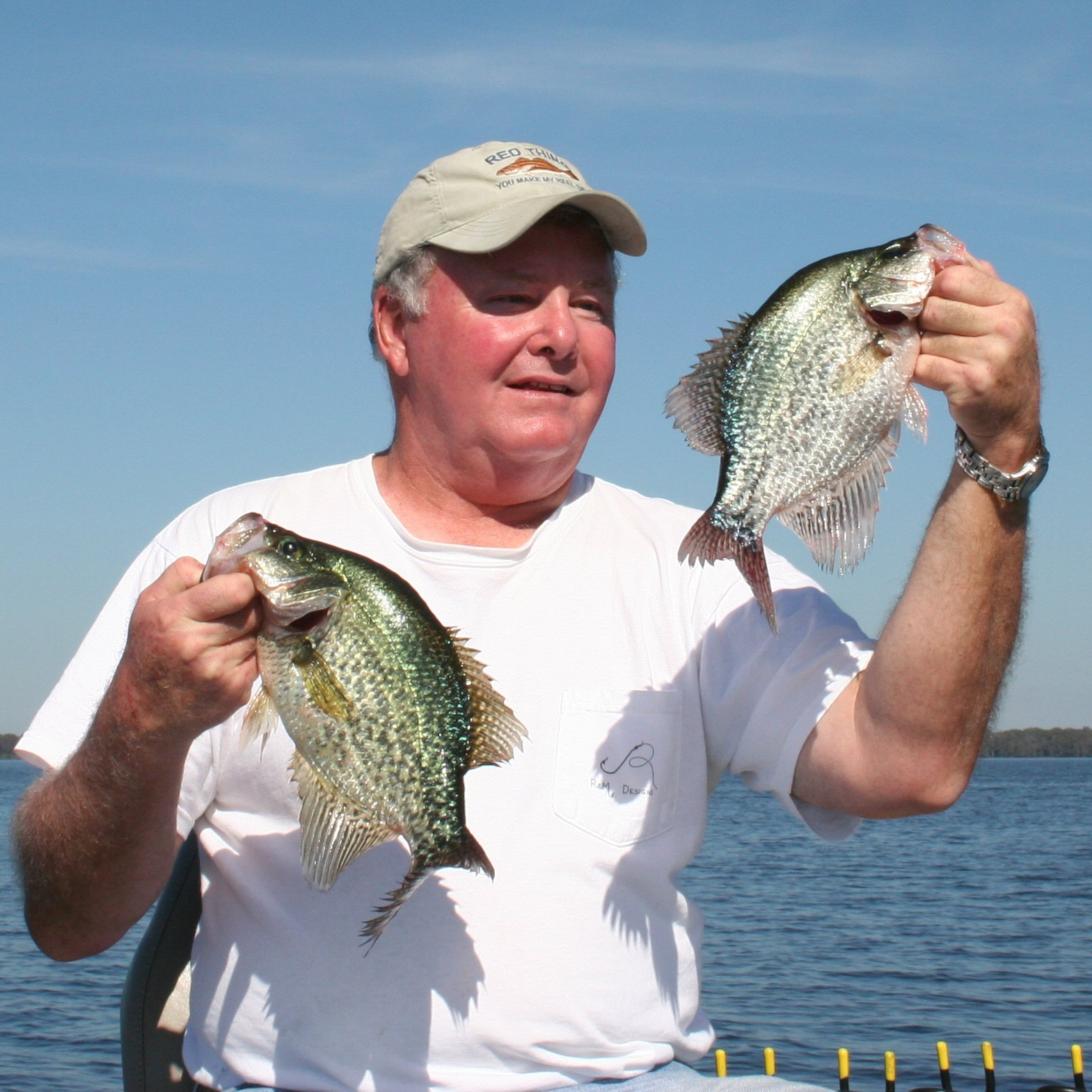How to catch flounder: the best tips for successful fluke fishing from an expert
Our pro angler reveals how to catch flounder with the best fishing tackle, rigs, baits, locations, times and tips you need to know for flounder, fluke and flatfish
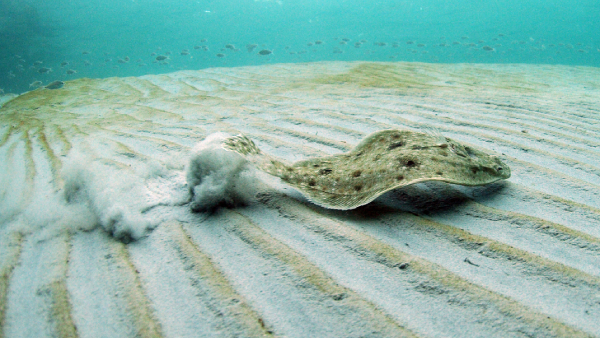
Commonly called flounder and sometimes fluke, this flatfish's abundance and great eating qualities endears it to fishermen wherever the species is found, making learning how to catch flounder a great idea if you fish the East Coast USA waters.
Knowing how to plan a fishing trip is always important, and a good understanding of how to catch flounder will improve your day a. Flounder are one of the more unusual sportfish in North America, as both eyes are positioned on only the dark or “up” side of the body. They’re broad and dark colored across the back with some faint spotting. They rarely measure more than two feet long, and are much “flatter” than most other inshore and near-shore marine species.
Here's an essential guide if you want to know how to catch flounder...
How to catch flounder: fluke fishing information for beginners
There are several flounder species inhabiting the western Atlantic Ocean and along the Upper Gulf Coast of America. These include the Gulf, Southern, Summer and Winter species. Similar fish also are found along the Pacific Coast, chiefly the California halibut.
But this story is about the best ways to catch Atlantic and Gulf Coast species of flatfish, which average 1 to 3lb, but regularly weigh 4 to 10lb. Some fish weighing to 20lb have been taken, but they are rare and of record size.
The Atlantic and Gulf Coast species of flounder typically are caught in the same type of coastal habitats, and identifying one subspecies from another is best left to biologists. For average anglers, flounder are flounder, wherever found and whatever their hue.
Along the East Coast, especially off New York, New Jersey and parts of New England, flounder are called fluke, but for practical fishing purposes they’re much the same as flatfish caught in other regions of America.
Advnture Newsletter
All the latest inspiration, tips and guides to help you plan your next Advnture!
How to catch flounder: the best times to go fishing for flounder
Throughout the coastal range of flounder, there are seasonal “runs” of fish, meaning that large schools of the species move into and scatter across coastal regions through the seasons. Such “runs” or migrations of flounder are tied to many things, including spawning preferences, water quality and temperature, bait availability, and species abundance.
Some years runs of flounder are huge, other years may be lean, and runs can be very localized. For example, a great run of Summer Flounder may be underway in Southeast Georgia, while South Carolina’s run of the species that year is poor. And different subspecies of flounder can overlap, with Summer Flounder caught by anglers at the same time and place as Southern or Gulf flounder, for example. Following these trends and migrations, asking at local tackle shops and generally following catches will all help to work out when these local runs occur.
For the average angler wanting to catch a few flatfish for a succulent dinner, what’s really important is where to look for them, and how to catch flounder once runs of fish are ongoing.
How to catch flounder: the best places to go fishing for flounder
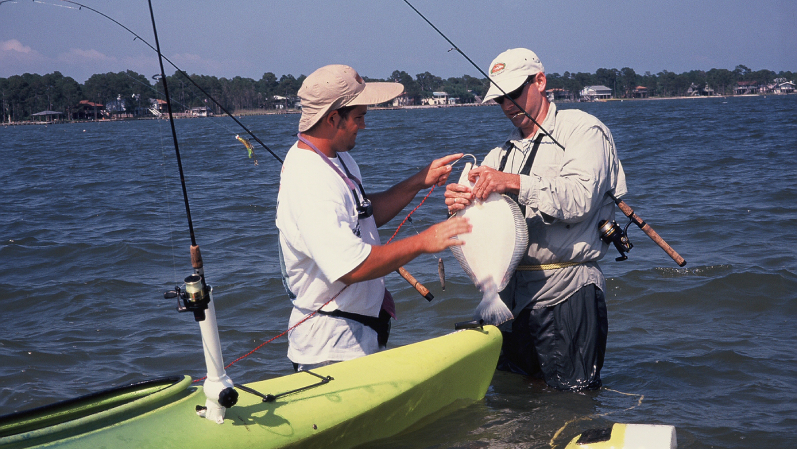
While flounder are commonly found in deep water out to 100-feet or more around reefs and wrecks, for most anglers, flounder are usually targeted when they move into shallow water bays, inlets, river mouths and inshore creeks and marsh areas. These are some of the best flounder fishing areas.
Locations where tidal flow or current is found are generally preferred, as flounder are aggressive ambush predators, positioned flat on the bottom, watching and waiting to strike prey as it swims by.
Places where river or tidal current narrows or concentrates in flow are prime spots for flounder to station and feed, making them ideal places for anglers to target. Such spots can be the small mouths of inshore creeks where they feed into bigger tidal streams and rivers.
Flow junctions where two or more streams or marsh run-outs merge can be choice for flounder. Places where current is deflected around and through bridge abutments and dock pilings and near bulkheads and over rocky bottoms can hold schools of stationary, ambush-ready flounder.
Jetty rocks and shell bar edges can be good too where there is sufficient current flow to deliver prey food to flounder laying on bottom. Inlets and jetties can harbor big numbers of flounder, offering anglers choice opportunities for casting lures and baits, drifting and even trolling. Inshore ledges and drop-offs in 4–20ft of water also are prime flounder feeding spots.
Flounder are also abundant near reefs and wrecks offshore, out to 100ft depths and more. Offshore–style boats are needed to fish such flounder. But it’s effective and popular, especially with party and charter boats in the Northeast U.S., particularly off New York and New Jersey.
How to catch flounder: the best rigs and baits for flounder fishing
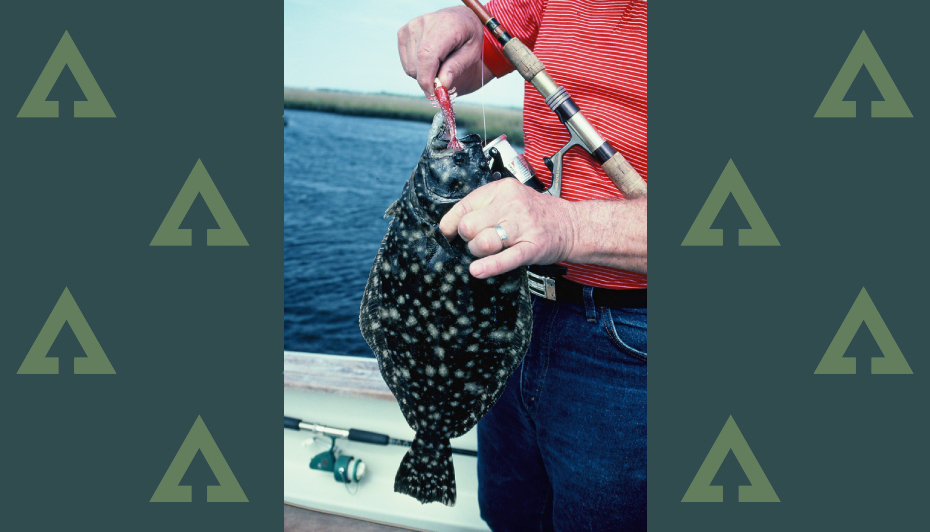
A wide variety of baits, lures and styles of fishing are effective for flounder, including fly fishing. Flounder feed mainly on small fish, though they can be caught with live shrimp or sometimes jigs tipped with shrimp. Generally, however, small live local minnow baits are preferred, with menhaden, mullet, mud minnows, juvenile shad and other finfish baits popular.
Simple rigging is preferred, with a fish-finder sliding-sinker set-up employed with a short leader and a barrel swivel connecting leader to fishing line. A 1/0 to 4/0 size Kahle–style bait hook is a good choice, with the minnow hooked through the lips, nostrils or eyes. Such baits can be cast and retrieved slowly in likely areas, as well as trolled or bumped along bottom from a drifting boat.
Lead head jigs work well for flounder, in 1/8 to 2oz weights depending on water depth. Simple spinnerbaits also are excellent for flounder, much the same lures that freshwater bass anglers employ. A safety-pin style spinner-bait with Colorado-design blade (gold or chrome) attached to a jig head and fitted with a whole live minnow or fresh strip of finfish fillet is also deadly for flounder.
Because flounder are stationary bottom feeding sportfish, it’s important lures and baits are presented on or just off bottom. But flounder are very aggressive predators that strike baits and lures hard and fast.
Flounder have a well-earned reputation for pulling free from lures and baits near the end of a fight, often near the boat just out of netting range. Some anglers believe flounder hold baits so hard with sharp teeth and a strong maw that a lure or bait hook is not sufficiently set in the flounder’s mouth. For this reason, some anglers set hooks in flounder several times during a fight to ensure barbs are driven deep into fish.
How to catch flounder: picking the best rod and reel combo for fluke fishing
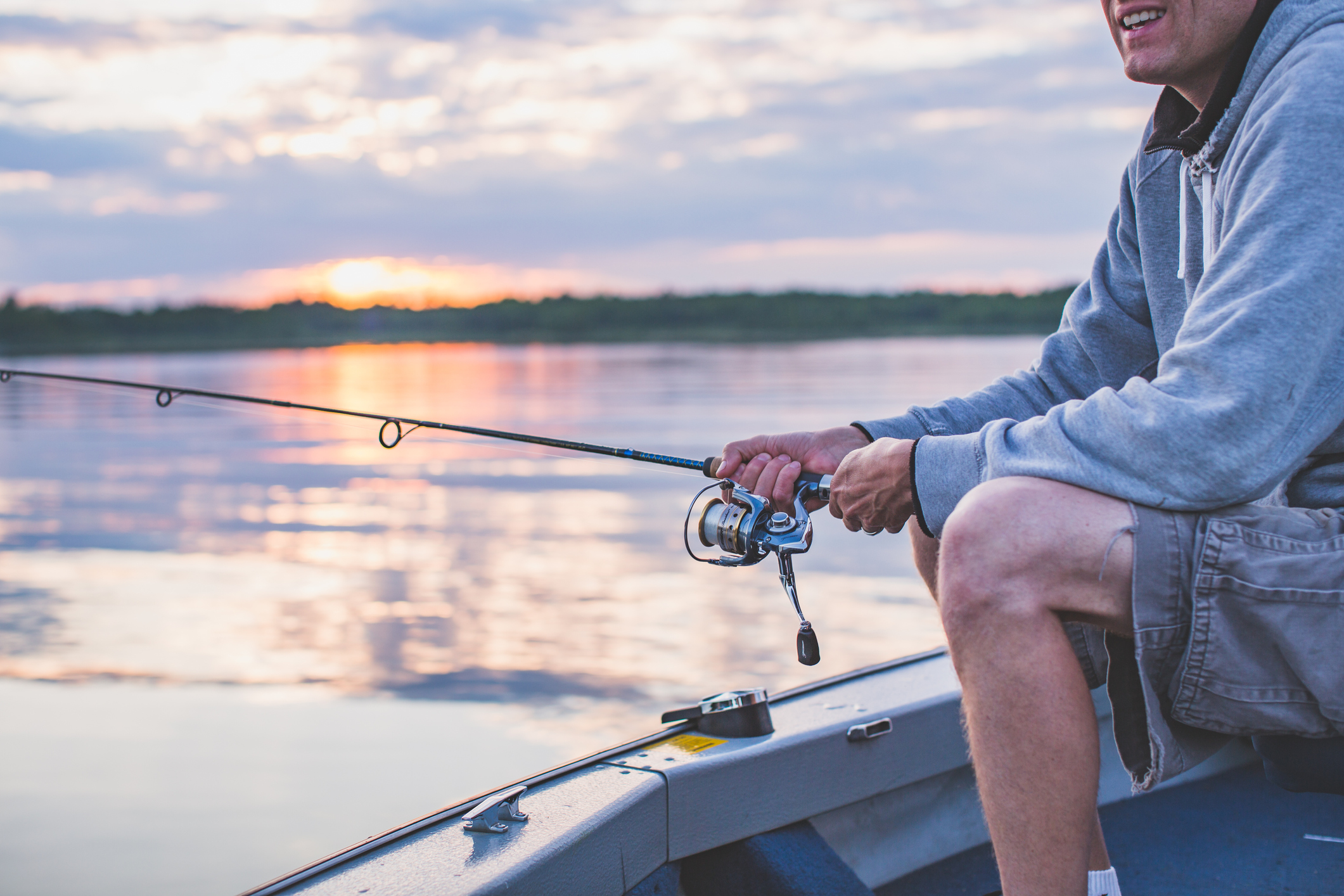
Medium–light spinning and bait–casting tackle is suitable for flounder, with braided lines testing 10–30lb, and 20–30lb fluorocarbon leaders used by many. You don't need anything too heavy. Match your saltwater spinning (2500 to 4000–size is great) or small baitcasting reel with a suitable rod in the 6–8ft range depending on your reel size and anticipated casting weights.
Fly-rodders will find 8 or 9–weight outfits and 9ft rods suitable, with a good assortment of streamer flies to imitate minnows. Have plenty of Clouser–style models to insure near-bottom retrieves.
While most flounder are caught by anglers working from small boats and skiffs, great action can be had in many coastal areas by fishermen in kayaks. Flounder also are targeted by wade fishermen, jetty jockeys, shoreline dock and pier anglers and even in some surf locations.
Most states have catch limit and size restrictions for flounder, and licenses are required in some regions. Anglers should be sure to check with state fisheries folks for details.
Armed with the information on how to catch flounder that's detailed above, you're now fully–equipped to find lots of big fluke on your next fishing trip wherever you're heading. Tight lines!
Bob McNally has been around fishing and the outdoors all his adult life. He caught his first sailfish at age nine, his first tarpon and bonefish at age ten.
In addition to writing thousands of newspaper outdoor stories and feature magazine articles on fishing, multi-award-winner Bob is the author of 11 outdoor books, including the definitive, best-selling Fishermen's Knots, Fishing Rigs, and How To Use Them. Bob has fished throughout Canada, Mexico, Central and South America, Europe, Cuba and the Bahamas and lives near Jacksonville, Florida with his wife.
